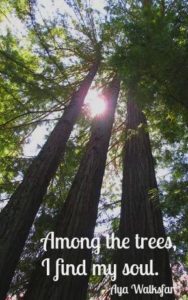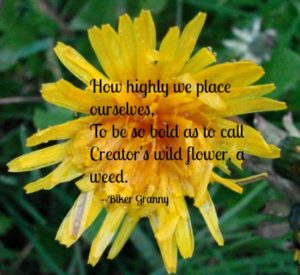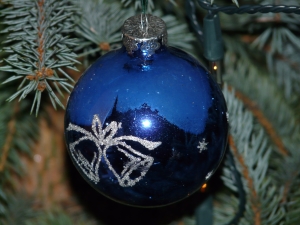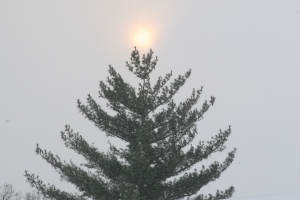
As Labor Day and the celebration of the workings person’s achievements end, we need to recognize an even greater achievement of the everyday person: the legacy of our world to the children of the seventh generation yet to come. Whether that achievement becomes a positive or a negative is yet to be determined.
Among the ‘Haudenosaunee’–the Native Americans of the Mohawk, the Oneidas, the Onondagas, the Cayugas, the Senecas and the Tuscarora–called the Six Nations by the English and called the Iroquois by the French, is a teaching from The Peacemaker, their spiritual teacher from around a thousand years ago. This teaching says: ‘When you sit and you council for the welfare of the people, think not of yourself nor of your family nor even your generation. Make your decisions on behalf of the seventh generation coming….’ (Listen to the entire speech by Oren Lyons, Chief and Faith Keeper, Onondago Nation, from which this quote is taken at https://nnidatabase.org/video/oren-lyons-looking-toward-seventh-generation )
If we heed the words of The Peacemaker, we need to assess every action we take against how it will affect those children yet to be born in approximately 140 years (if each generation is born when the mother is 20 years old). One of the issues that we need to view critically is how we are safeguarding, or not safeguarding, the natural world.
Let’s look at the production of oxygen. According to Luis Villazon, a mature sycamore tree is roughly 12 m tall (one meter equals 3.2 feet) and weighs around two tons, including roots. Seven to eight mature trees are required to produce enough oxygen for one person for one year. (see entire article at http://www.sciencefocus.com/qa/how-many-trees-are-needed-provide-enough-oxygen-one-person )
Environment Canada, Canada’s national environmental agency says that “On average, one tree produces nearly 260 pounds of oxygen each year. Two mature (emphasis is mine) trees can provide enough oxygen for a family of four.” There are “millions of trees” in the world; surely we have plenty of trees to produce enough oxygen for everyone? Unfortunately, we need to factor in the reality there are 6 billion people on earth—give or take a billion. According to some estimates, only around 700 trees can be grown per acre. And, that is only if the land is healthy enough, if there is sufficient rainfall, and if pollution does not negatively impact the growth/health of those trees.
But production of oxygen is only one part of the equation. Water is another critical part. “A large redwood tree—a 200 foot redwood with a trunk 5 feet in diameter—holds 34,000 pounds of water and transpires (gives off water vapor) up to 200-500 gallons of water each day.” (see entire article at http://www.shannontech.com/ParkVision/Redwood/Redwood2.html ) A mature oak absorbs around 50 gallons of water in a day. Without mature trees the amount of water absorbed and then transpired is greatly lessened. This results in damaging runoffs during rainy seasons and in less water available over a dry period.
Whether we believe that life originates from the primordial ooze and has evolved over millions of years or if we believe that Creator created all of life, what we cannot escape is that all life is intrinsically linked.

We are bound to all of life–the plants and animals, the birds and insects, the reptiles and the fish–either due to dependencies that we have yet to discover because we evolved, not in a vacuum but with the rest of life, or we are bound together because we all belong to the same Great Tapestry of which we can only see a very small portion. Consequently, every time we destroy, or stand aside and allow others to destroy, a part of the natural world we are forever negatively impacting the quality of life not only for ourselves, but for those who are yet unborn. What type of world will we leave those of the seventh generation?
But why is a mystery writer, a writer of novels, talking about responsibilities to the seventh generation; about the science behind the production of oxygen and of water?
I am an optimist. It is one of the great motivations behind my writing. I believe that people can change, can grow, can become more than what they are. People can reach heights of compassion and generosity; of concern and of care beyond anything ever seen before.
I am an optimist. I believe we can change not only our own destiny, but the destiny of the world. I believe that if we choose, we can leave our world a better place, a more beautiful place, a more just place, a more compassionate place than the one in which we were born. This optimism is the message underlying all of my work. This optimism fuels every book I write. Every blog I write. Every sentence I write.
But all the optimism in the world cannot change a dead earth. An earth without oxygen. An earth without water. An earth without the beauty of the birds and the animals. All the optimism in the world cannot bring back those dozens of species that are becoming extinct nearly every day. And even an author cannot survive on a dead world.
But, I am an optimist. I speak about these harsh facts because I believe we can change the growing darkness on the horizon. I believe we can overcome that darkness with light, with hope, with a new reality. That optimism, that belief in the ability of people to change for the better, is why I write.

What kind of footprints will you leave behind?



